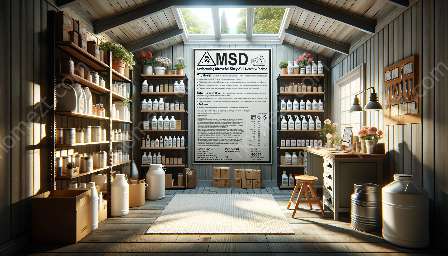Having a complete understanding of hazardous materials in the home and how to identify and store them safely is essential for maintaining a safe and secure living environment. This guide will provide you with the knowledge and tools to recognize hazardous materials, utilize safe storage practices, and enhance overall home safety and security.
Identifying Hazardous Materials
Many common household items can be hazardous if not used or stored properly. It is important to be aware of the potential dangers and take necessary precautions. The following are some of the most common hazardous materials found in the home:
- Cleaning Products: Many cleaning products contain harsh chemicals that can be harmful if ingested or inhaled. Always read and follow the instructions on the labels.
- Medications: Expired or unused medications can pose serious health risks if not disposed of properly. It is important to follow safe disposal guidelines or seek assistance from healthcare professionals.
- Chemicals: Products such as pesticides, fertilizers, and fuel should be stored in their original containers and kept securely out of reach of children and pets.
- Batteries: Certain types of batteries contain corrosive materials and should be stored safely to prevent leakage and exposure.
- Paints and Solvents: These items contain potentially harmful substances that require proper ventilation and storage to prevent health and environmental risks.
Safe Storage of Hazardous Materials
To ensure the safe storage of hazardous materials in the home, it is imperative to adhere to specific guidelines:
- Read Labels: Always read and follow the instructions on product labels regarding proper storage and usage.
- Secure Storage: Store hazardous materials in locked cabinets or containers, away from food, children, and pets.
- Proper Ventilation: Ensure adequate ventilation in areas where hazardous materials are stored to minimize exposure.
- Seal Containers: Keep containers tightly closed and properly sealed to prevent leaks and spills.
- Separate Storage: Store different hazardous materials separately to prevent potential chemical reactions or contamination.
Home Safety and Security
Improving overall home safety and security involves taking proactive measures to safeguard against the presence of hazardous materials and other risks. Consider the following steps:
- Regular Inspections: Conduct routine inspections to identify and address any potential hazards in the home.
- Emergency Preparedness: Have a plan in place for responding to accidents or incidents involving hazardous materials.
- Childproofing: Implement childproofing measures to minimize the risk of children coming into contact with hazardous substances.
- Proper Disposal: Dispose of hazardous materials according to local regulations and guidelines to prevent environmental contamination.
By enhancing your knowledge of hazardous materials, implementing safe storage practices, and prioritizing home safety and security, you can create a healthier and more secure living environment for you and your family.



